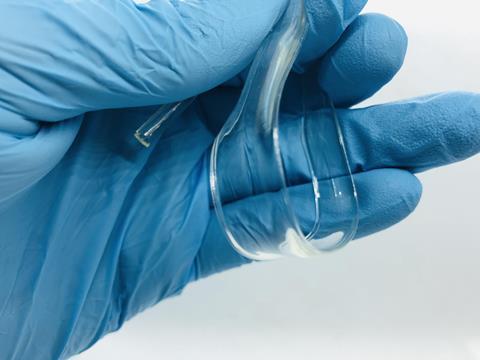
Scientists from the Swiss Federal Institute of Technology have developed a new PET-like plastic that is made from the non-edible parts of plants.
The scientists report that their material is tough, heat-resistant, and capable of creating a good barrier to gases like oxygen, making it a candidate for food packaging. Due to its structure, the new plastic can also reportedly be chemically recycled and degrade back to sugars in the environment.
“We essentially just ‘cook’ wood or other non-edible plant material, such as agricultural wastes, in inexpensive chemicals to produce the plastic precursor in one step,” Professor Jeremy Luterbacher at EPFL’s School of Basic Sciences.
“By keeping the sugar structure intact within the molecular structure of the plastic, the chemistry is much simpler than current alternatives.”
The technique is based on a discovery that Luterbacher and his colleagues published in 2016, where they found that adding an aldehyde could stabilize certain fractions of plant material and avoid their destruction during extraction. By repurposing this chemistry, the researchers were able to rebuild a new bio-based chemical as a plastic precursor.
“By using a different aldehyde – glyoxylic acid instead of formaldehyde – we could simply clip ‘sticky’ groups onto both sides of the sugar molecules, which then allows them to act as plastic building blocks,” says Lorenz Manker, the study’s first author. “By using this simple technique, we are able to convert up to 25% of the weight of agricultural waste, or 95% of purified sugar, into plastic.”
The scientists believe that the properties of this new material could allow it to be used in applications ranging from packaging and textiles to medicine and electronics. The researchers have apparently already made packaging films, fibers that could be spun into clothing or other textiles, and filaments for 3D printing.
“The plastic has very exciting properties, notably for applications like food packaging,” says Luterbacher. “And what makes the plastic unique is the presence of the intact sugar structure. This makes it incredibly easy to make because you don’t have to modify what nature gives you, and simple to degrade because it can go back to a molecule that is already abundant in nature.”

















No comments yet